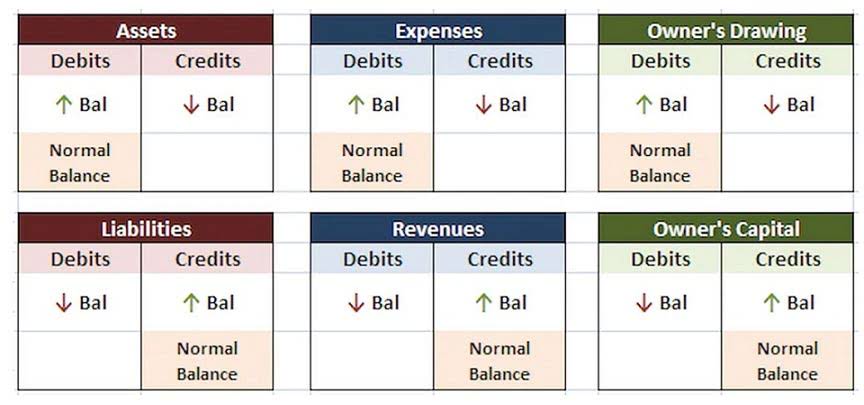
Be sure to go through the steps Accounting for Technology Companies mentioned above for setting up a new trust account. To ensure you are managing your accounts in an ethical and compliant way, always check the rules for managing trust accounts in your jurisdiction. Your client ledger report lists the client’s deposits and withdrawals activity for their specific trust account.
Do You Do Everything Perfectly? Why That Might Be Killing Your Business Growth
An attorney may be faced with trust accounting at several stages when working with clients. When a firm first represents a client, it may receive retainer fees or other deposits to put into a trust account. Settlement payments are another example; this is when the attorney manages and distributes funds on behalf of the client. Depending on the law firm and the local Bar rules, sometimes attorneys use the funds directly out of the client’s trust bank account to pay for client expenses. Depending on the software used for law firm accounting, trust funds can be placed into one trust liability account and tracked by the customer name or any other preferred method.
Leaking money
- At its core, a trust account is a separate bank account where lawyers hold funds on behalf of their clients.
- Law firms show transparency and accountability by keeping records of all fund transactions on behalf of clients.
- The Bar Association wants to see that you know to the penny what is in each account that totals the entire trust bank account balance.
- These are some of the basics of trust accounting compliance, but some U.S. states also have additional rules if you’re handling client funds.
- LeanLaw creates easy to access billable reports, revenue reports distributions, and other legal specific reports like trust accounting and timekeeper productivity.
You must first decide whether you are using a seperate account for each client matter or whether one trust account will be used for multiple clients. This is a legal matter, not an accounting matter so this is not discussed here. Efficient, accurate accounting processes are important to help your firm succeed. Easy-to-use trust account dashboards help legal professionals avoid inadvertently misusing client funds. Perform complex transactions across large amounts of data with intuitive law firm accounting software.
- If the trust balance is $1000 for a client and he has $400 that he owes you, you click in and see the invoice.
- By avoiding these common pitfalls and implementing best practices, you can maintain smooth and compliant trust accounting processes.
- Trust accounting is a multi-step process involving numerous points of data.
- Without proper attorney bookkeeping, it’s impossible to track what money is coming (and leaving your firm).
- These rules, which vary by jurisdiction and state bar requirements, are put in place to protect the financial interests of clients and ensure that their funds are properly accounted for and managed.
- Legal-specific software, on the other hand, is designed to handle the intricacies of trust accounting.
The Trust Accounting Process: Key Steps for Law Firms to Stay Compliant
If you are audited by the state bar, you’ll want to make sure you can produce your trust balances on the fly in an easy-to-read format on a matter-by-matter basis. Only money provided by the client or which is to be paid to the client should go into a trust account. When attorneys hold funds in a trust account, they’re in charge of client property, and that money must be accounted for to maintain trust account compliance. Embrace the future of legal practice with confidence, supported by RunSensible’s comprehensive solutions for trust account management. Watch the full webinar to learn more about trust accounting best practices for your firm. Many lawyers enter the profession with little to accounting no business or accounting training.

What is a Client Trust Account?
Our trust accounting software allows you to complete three-way reconciliation using Clio Accounting. Clio Accounting uses the bank feed matching process to automatically connect transactions from the ledger with what’s in the bank account. With all three sources of information conveniently available in one place, Clio makes it quick and easy to reconcile and access current or past reports for compliance purposes. That includes always being able to account for the money in the trust account, and giving a detailed statements of transactions attorney trust account for each client. This is really simple with LeanLaw due to the way the accounts are organized.
- The primary objective of trust accounting is to ensure the safeguarding of client funds, maintain transparency, and comply with legal and ethical obligations.
- To see the balance of the trust account, you have to go over to the accounting tab and see that this client has $5000 available.
- Proper trust accounting practices are essential for managing a lawyer trust account and avoiding issues related to improper fund management.
- Regular and transparent accounting allows beneficiaries to stay informed about the trust’s administration.
- Book your demo today to see how Clio Accounting can manage your bookkeeping and accounting from the same place you manage everything else for your firm.
CosmoLex is the best trust accounting software for a reason—we take the guesswork out of navigating these complex accounts and give legal professionals peace of mind to feel confident in handling trust financial data. However, generic small business accounting software, like QuickBooks Online, isn’t equipped to manage these accounts while ensuring compliance with legal standards. As such, the use of these products can actually create more work for attorneys and other legal professionals since complex workarounds must be used to manage trust transactions. To ensure your firm’s financial statements are accurate, complete, and up-to-date, you need to use sound bookkeeping for attorneys.

Maintain Accurate and Detailed Records

Trust accounting is the process of tracking and monitoring client funds that are held in trust. These funds must be held until they are used for a specific client’s case, and cannot be accessed any earlier. A retainer fee payment, personal injury settlement, and insurance payout—these are all situations where a lawyer needs to use trust accounting. There’s an open invoice for $2000 and I want to pay it through the trust. To see the balance of the trust account, you have to go over to the accounting tab and see that this client has $5000 available. The only option is to use the memo field to say, “Current retainer balance $5000.
Sample Billing Language for Attorneys: Ultimate Guide
Our platform also integrates with any legacy platforms your firm uses to limit duplication or loss of financial data. CosmoLex helps firms stay in compliance with regulatory requirements in the legal industry. For example, our trust accounting software supports incredibly strong security standards, ensuring client documentation is always safe and secure. Because lawyers have an ethical duty to ensure client confidentiality, CosmoLex helps small and mid-sized law firms stay in compliance by encrypting information and securely housing documents and data. When clients hire lawyers, they often entrust them with significant amounts of money—whether for legal fees, settlements, or other purposes. To ensure proper handling of these funds, lawyers typically use trust accounts, a specialized type of bank account that holds client funds separate from the lawyer’s personal or business finances.
This type of account provides a clear and direct audit trail for each client’s funds. In fact, no case exists where a law firm’s payroll function would access a client trust account because payroll expenses should come from the firm’s operating account. Lawyers cannot use funds in trust accounts until they are earned through billable work or used to pay fees on a client’s behalf. For example, lawyers can use funds from this account to pay court fees for their client’s case.


